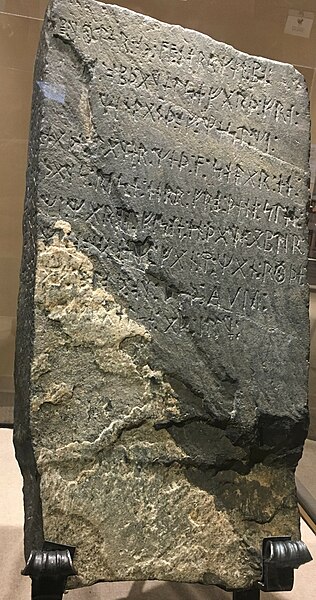The Kensington Runestone is a slab of greywacke stone covered in runes that was discovered in central Minnesota, United States, in 1898. Olof Ohman, a Swedish immigrant, reported that he unearthed it from a field in the largely rural township of Solem in Douglas County. It was later named after the nearest settlement, Kensington.
The stone on display in the Alexandria Chamber of Commerce and Runestone Museum
Quintuple-scale replica of the Kensington stone, erected 1951 in Alexandria, Minnesota by the Alexandria Kiwanis Club.
Statue of "Big Ole the Viking" in Alexandria, Minnesota, proclaiming the city the "Birthplace of America," based on an assumed authenticity of the Kensington Stone.
1911 bill of sale for the stone from Ohman to the Minnesota Historical Society
Norse colonization of North America
The Norse exploration of North America began in the late 10th century, when Norsemen explored areas of the North Atlantic colonizing Greenland and creating a short term settlement near the northern tip of Newfoundland. This is known now as L'Anse aux Meadows where the remains of buildings were found in 1960 dating to approximately 1,000 years ago. This discovery helped reignite archaeological exploration for the Norse in the North Atlantic. This single settlement, located on the island of Newfoundland and not on the North American mainland, was abruptly abandoned.
Summer in the Greenland coast circa year 1000 by Jens Erik Carl Rasmussen (1841–1893)
A reconstruction of Norse buildings at the UNESCO listed L'Anse aux Meadows site in Newfoundland, Canada. Archaeological evidence demonstrates that iron working, carpentry, and boat repair were conducted at the site.
The Kensington Runestone on display in the Alexandria Chamber of Commerce and Runestone Museum.






